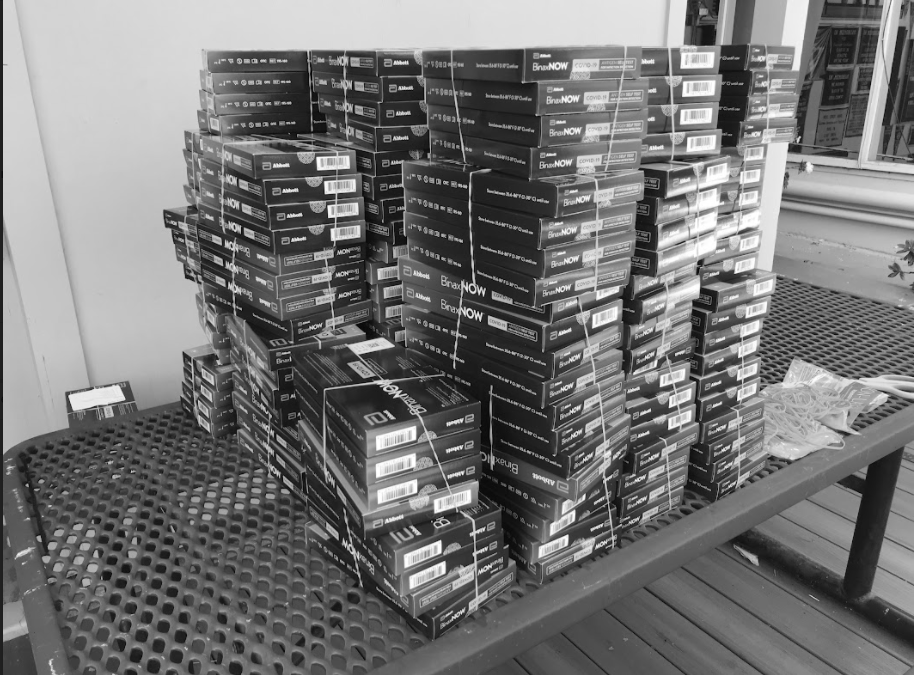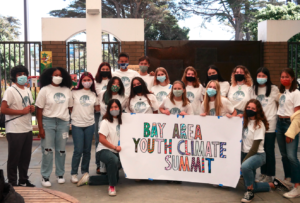Lick-Wilmerding High School’s COVID-19 testing procedures are different this year. Tests are self-administered at home instead of on-campus, use nasal swabs instead of spit and, according to students, are far more convenient.
With these changes, you may have some questions about the efficacy of the COVID-19 test you are using, how the test works and why we’re still taking them.
LWHS has been provided the Abbott BinaxNOW tests by the California Department of Public Health forfree to determine how an at-home testing program would be successful and to test the functionality of the software we use. Though other schools in California also have protocols for students to use weekly at-home tests, LWHS designed a testing regimen for students to test twice a week — once on Sunday and once on Wednesday.
First, how does the test work and what is it? The BinaxNOW test from Abbott Laboratories is an antigen test, which means they are immunoassays that test for the current presence of a viral antigen.
The Polymerase Chain Reaction test (PCR) — highly coveted as the gold standard for COVID tests — works differently. It detects viral RNA and can indicate both past and present infection. The most recently FDA authorized PCR tests are produced by Southern California Permanente Medical Group and Labcorp.
Why were the antigen tests chosen?
First, antigen tests are good at catching symptomatic cases.
PCR tests are highly sensitive, to the point where people who have had COVID months prior and are not contagious have tested positive because the RNA of the virus is still present.
Antigen tests are less sensitive than PCR, and false positives are often just user error. Because of this, asymptomatic cases are harder to catch with antigen tests, but they’re very effective in catching symptomatic cases.
“That’s the perk of a rapid test, especially with a population that’s very vaccinated,” said LWHS Health Coordinator, Mariah Kaitz.
Second, the BinaxNOW antigen test gives results in 15 minutes.
PCR tests take upwards of three days to process. Since SARS-Cov-2 is an RNA virus, an enzyme, Reverse Transcriptase (PT-PCR), is needed because RT-PCR isolates RNA and converts it to DNA. The DNA is then amplified and scientists are able to see if a person is infected with COVID-19 or not. This has to be done in a lab, so it takes a lot longer to get results. The Binax antigen tests take fifteen minutes, so they are far better suited for community wide testing.
LWHS Chief Financial and Operations Officer, Jeanette Moore said, “Antigen testing has significant advantages to PCR testing because it is better correlated with the period of time when someone is infectious.”

The LWHS population is an impressive 97-98% vaccinated and counting, compared to San Francisco’s general population that is 76% vaccinated. With those kinds of vaccination rates, why should we still have to test?
The decision to continue testing was made well before the surge in cases from the Delta variant.
LWHS was “provided the opportunity to receive these tests from the California Department of Public Health (CDPH), and we wanted to start out the school year with as much data as possible about potential spread in our community,” said Moore.
Repeat testing, as LWHS is doing, is recommended by the CDPH. This is most effective in catching asymptomatic cases when using antigen tests like BinaxNOW.
On October 6, the school handed out 16 more BinaxNOW tests to each on-campus members of the LWHS community, enough to last eight weeks.

When these are used up, a new system will have to be put in place, according to rates of transmission and what is available.
Generally, students want to continue testing, although for different reasons.
“I hope with the fact that we’re testing twice a week we will eventually be able to just take our masks off during school,” said Joel Collier ’23.
However, Antonia Casey ’23, wishes to continue testing and keep mask mandates to stay safe.
About 30-50 students forget to test on each of the biweekly test days. Often, people have simply forgotten, but the software being used is less than perfect and some students do not receive one of the notifications, if any at all.
Fortunately, LWHS staff members send out extra reminders and provide on campus testing for those who do not complete their tests, which puts a bit of a wrench in this ideally streamlined system. It is not an easy task either; reminders have to be sent out by hand after finding who has not been tested.
This has been mostly successful in catching any missed tests, but some testing on campus has had to be done. Some who forget are stopped by Teaching Assistants at the front door. Head of school Eric Temple, Grade Level Deans, Molly French and Teaching Assistants can be seen going from classroom to classroom asking students who forgot to test to report to the Health Office and take a test.
Forgetting to test does not go without consequence. If a student repeatedly does not test themselves, they will first have to get a letter of acknowledgment signed by their guardians. The second time they receive an unexcused tardy for their first class. Third, they receive a cut resulting in a 1.67% grade drop in their first class and are required to write how they will not forget in the future. And for a fourth time, they will receive a cut for every class.
These consequences are deemed too harsh by students. Several students said they did not receive any notifications, forgot and were punished although they felt it was not their fault.
For the 2021–2022 school year, there have been three positive cases of COVID-19, which were caught with these tests.
So please keep testing yourselves, for the health of your community, yourself, your grades and for science!






